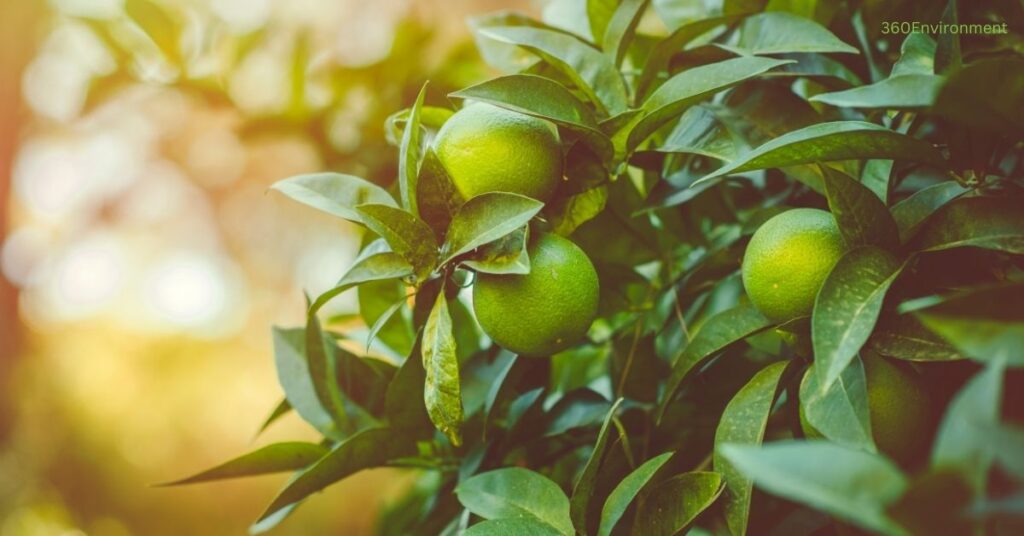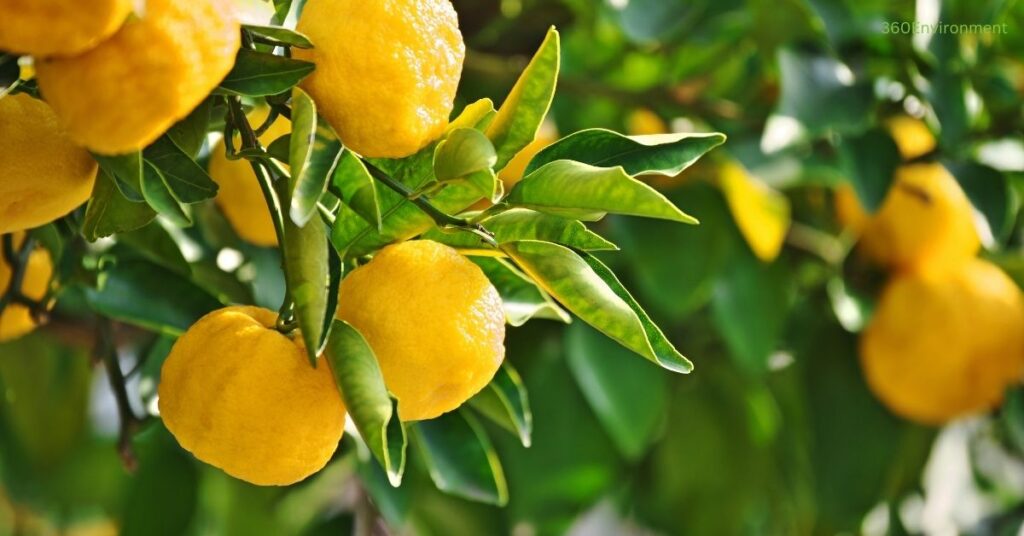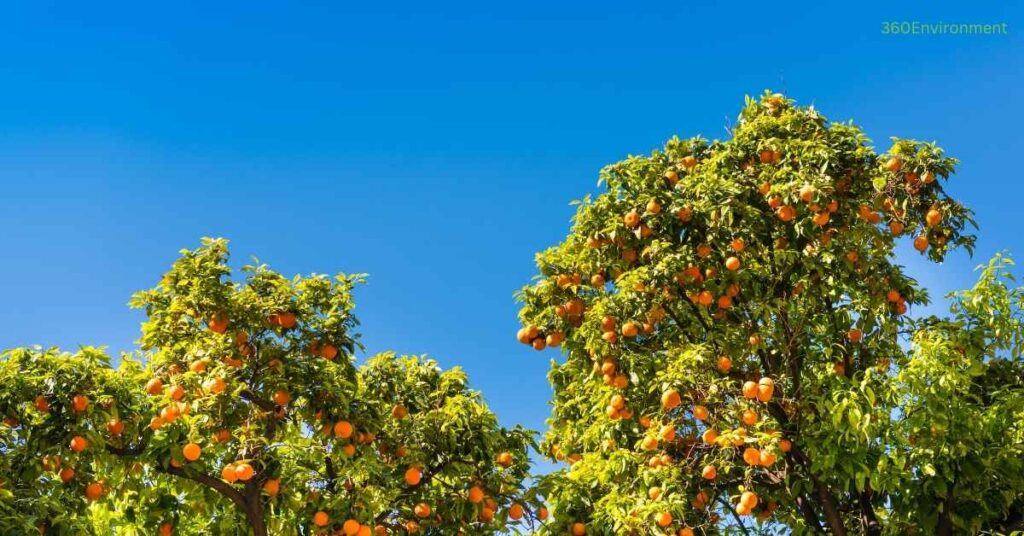Citrus trees, commonly referred to as Citri, are an important group of fruit-bearing plants from the Rutaceae family. Known for their rich fruits such as oranges, lemons, limes, and grapefruits, citrus trees have been cultivated for thousands of years and have become integral to many agricultural systems and culinary traditions worldwide. However, beyond their economic and nutritional significance, citrus species occupy a unique environmental niche that offers insights into their ecological role, adaptability, and interactions with their surrounding environment.
This article delves into the environmental niche of Citri, exploring its origins, ecological requirements, biotic interactions, and impacts on ecosystems. By understanding the ecological factors that shape the growth and distribution of citrus species, we gain a deeper appreciation for the role these plants play not only in agriculture but also in sustaining biodiversity, soil health, and global ecosystems.
1. Origins and Taxonomy of Citri

Citrus species belong to the genus Citrus within the Rutaceae family. The genus includes a variety of species and hybrids, including sweet oranges (Citrus sinensis), lemons (Citrus limon), limes (Citrus aurantiifolia), grapefruits (Citrus paradisi), and mandarins (Citrus reticulata). These fruit-bearing trees are native to Southeast Asia, particularly in regions that include northeastern India, northern Myanmar, and the Yunnan province of China.
Citrus species have been domesticated and hybridized over millennia, leading to the development of numerous cultivars adapted to diverse climates and growing conditions. The domestication of citrus can be traced back over 4,000 years, with evidence of cultivation in ancient China and the Indus Valley. The movement of citrus along trade routes, particularly through the Mediterranean, further expanded its global reach, with citrus groves becoming staples in countries like Spain, Italy, and North Africa during the Middle Ages.
2. Environmental Niche of Citri: Key Growing Conditions
The environmental niche of citrus species is defined by a range of abiotic and biotic factors, including climate, soil, water, light, and interactions with other organisms. Citrus trees have evolved to thrive in specific ecological conditions that allow them to maximize growth, fruit production, and reproduction. Understanding these key factors helps explain why citrus cultivation is concentrated in certain regions of the world.

2.1. Climate and Temperature
Citrus species are typically grown in subtropical to tropical climates, where temperatures are moderate and frost is rare. These trees require warm temperatures for optimal growth, with the ideal range falling between 12°C to 30°C (54°F to 86°F). Extreme heat, however, especially above 40°C (104°F), can lead to heat stress, causing dehydration, leaf scorching, and reduced fruit quality. Citrus trees are also sensitive to cold, particularly frost, which can damage the foliage, flowers, and fruit. Prolonged exposure to temperatures below 0°C (32°F) can result in severe damage or death.
Different citrus species have varying degrees of tolerance to cold. For instance, lemons and limes are more susceptible to frost than oranges and grapefruits, which are slightly hardier. In temperate regions where frost is a concern, citrus trees are often cultivated in protected areas or grown in containers that can be moved indoors during the colder months.
2.2. Water and Humidity
Citri trees are relatively drought-tolerant once established, but they require consistent moisture during key stages of growth, particularly during flowering and fruit development. The availability of water is a critical factor in citrus cultivation, as it directly influences fruit size, yield, and quality. Citrus trees prefer well-drained soils, as waterlogged conditions can lead to root rot and other diseases.
Irrigation is often necessary in regions with limited rainfall, particularly in Mediterranean climates where citrus production is common. Drip irrigation systems are commonly used in commercial citrus groves to provide consistent moisture while conserving water. In more humid tropical regions, citrus trees benefit from the natural rainfall but may face challenges related to fungal diseases, such as root rot or citrus canker, which thrive in wet environments.
2.3. Soil and Nutrient Requirements
Citrus trees prefer well-drained, sandy to loamy soils with a pH range between 6.0 and 7.5. While they can tolerate a range of soil types, including slightly acidic or alkaline conditions, proper drainage is essential to prevent root damage caused by excess water. Nutrient-rich soils support healthy tree growth and fruit production. Citrus trees require high levels of nitrogen, phosphorus, potassium, and other micronutrients like magnesium and calcium. Deficiencies in these nutrients can lead to poor growth, leaf yellowing (chlorosis), and reduced fruit production.
Fertilization practices vary depending on the soil composition and the specific needs of the citrus variety being grown. For instance, nitrogen-rich fertilizers are commonly applied to encourage vegetative growth and fruit development, while potassium supports fruit size and quality. Organic matter, such as compost or mulch, can improve soil structure and nutrient availability while promoting beneficial microbial activity in the soil.
2.4. Light Requirements
Citri trees are sun-loving plants that require full sunlight for optimal growth and fruit production. They thrive in environments where they receive at least 8 hours of direct sunlight per day. Insufficient sunlight can lead to stunted growth, reduced fruit yield, and poor fruit quality. In addition to influencing photosynthesis, sunlight plays a role in the ripening of citrus fruits, with warmer, sunnier conditions promoting the development of sugars and flavors.
Citri trees grown in shaded environments or densely planted orchards may experience reduced productivity, as the competition for light limits the amount of energy available for fruit development. In commercial groves, careful planning of tree spacing and canopy management is essential to maximize light penetration and optimize fruit yield.
3. Biotic Interactions: Pollinators, Pests, and Symbiotic Relationships
Citrus trees are part of a complex ecological web involving a wide range of organisms, including pollinators, pests, and other plants. These interactions play a crucial role in the health and productivity of citrus trees, influencing factors such as pollination, pest management, and nutrient availability.

3.1. Pollination and Reproduction
Most Citri species are self-fertile, meaning they can produce fruit from their own pollen without requiring cross-pollination between different plants. However, pollinators, including bees, butterflies, and other insects, play an important role in enhancing fruit set and improving fruit quality. Honeybees (Apis mellifera) are particularly effective pollinators for citrus trees, visiting the fragrant, white blossoms to collect nectar and pollen.
While Citri trees can produce fruit without pollinators, insect-mediated pollination tends to result in larger and more uniformly shaped fruit. Some citrus species, like grapefruits and certain mandarin varieties, benefit more from cross-pollination, with increased yields when bees or other pollinators transfer pollen between different trees or cultivars.
3.2. Pests and Diseases
Citrus trees are vulnerable to a wide range of pests and diseases, many of which can significantly impact fruit yield and quality. Some of the most common pests affecting citrus trees include aphids, mites, scale insects, and whiteflies. These pests feed on the sap of the trees, weakening the plants and leaving them susceptible to secondary infections and stress. In addition to direct damage, some pests serve as vectors for more severe diseases, such as citrus greening, also known as Huanglongbing (HLB), which is spread by the Asian citrus psyllid (Diaphorina citri).
Citrus greening is one of the most devastating diseases affecting citrus trees worldwide. It causes the fruit to become misshapen, discolored, and bitter, eventually leading to the death of the tree. There is currently no cure for citrus greening, and efforts to control the spread of the disease involve managing the insect vector and removing infected trees.
Fungal diseases such as root rot, citrus canker, and Alternaria brown spot also pose significant threats to citrus trees, particularly in humid environments. Proper orchard management, including the use of resistant cultivars, fungicides, and integrated pest management (IPM) strategies, is essential to minimize the impact of pests and diseases on citrus production.
3.3. Symbiotic Relationships
Citrus trees benefit from symbiotic relationships with various soil organisms, particularly mycorrhizal fungi. Mycorrhizal fungi form associations with the roots of citrus trees, extending the root system’s ability to access nutrients, particularly phosphorus, from the soil. In exchange, the fungi receive carbohydrates produced by the tree through photosynthesis. This mutualistic relationship enhances the tree’s nutrient uptake and improves overall plant health and resilience to environmental stress.
Beneficial insects and predatory species also play an important role in controlling pest populations in citrus groves. For example, ladybugs (Coccinellidae) and lacewings (Chrysopidae) are natural predators of aphids and other soft-bodied insects that feed on citrus trees. Encouraging biodiversity in citrus orchards by providing habitat for beneficial organisms can help reduce the need for chemical pesticides and promote a healthier, more balanced ecosystem.
4. Citri in Agroecosystems: Environmental Impact and Sustainability
Citrus cultivation is a major agricultural industry, particularly in regions such as the Mediterranean, South America, and the southern United States. While citrus farming provides economic benefits and supports rural livelihoods, it also has environmental impacts that must be carefully managed to ensure sustainability.

4.1. Water Use and Irrigation
Citri trees require significant amounts of water, particularly during the fruiting stage, making water management a critical issue in citrus-producing regions. In areas with limited rainfall, such as Mediterranean climates, irrigation is essential for maintaining healthy trees and ensuring consistent yields. However, over-reliance on irrigation can strain local water resources and contribute to environmental degradation, particularly in arid and semi-arid regions where water availability is limited.
Sustainable water management practices, including the use of drip irrigation systems, rainwater harvesting, and soil moisture monitoring, can help reduce water consumption and minimize the environmental impact of citrus farming. By optimizing irrigation practices, farmers can improve water-use efficiency while maintaining healthy crops.
4.2. Soil Health and Erosion
Citrus groves can have both positive and negative effects on soil health, depending on the management practices used. Intensive monoculture, where a single crop is grown year after year, can lead to soil degradation, nutrient depletion, and increased susceptibility to pests and diseases. On the other hand, citrus trees, with their deep root systems, can help prevent soil erosion and improve soil structure, particularly in hilly or sloped areas.
To promote soil health, sustainable citrus farming practices often include crop rotation, cover cropping, and the incorporation of organic matter into the soil. Cover crops, such as legumes or grasses, planted between citrus trees can help reduce soil erosion, improve soil fertility, and support beneficial insects and microbial life.
4.3. Biodiversity and Ecosystem Services
Citrus groves can provide valuable ecosystem services, particularly when managed with biodiversity in mind. For example, planting hedgerows or wildflower strips around citrus orchards can provide habitat for pollinators and natural predators, enhancing biodiversity and supporting ecosystem resilience. In addition, diverse agroecosystems are more resistant to pests and diseases, reducing the need for chemical inputs.
Organic citrus farming, which avoids the use of synthetic pesticides and fertilizers, is an approach that promotes biodiversity and soil health while minimizing environmental harm. Organic orchards often rely on natural pest control methods, such as introducing beneficial insects or using biological pesticides, to manage pest populations. Although organic citrus farming may require more labor and careful management, it offers long-term benefits for the environment. It can command higher prices in the market due to growing consumer demand for sustainable and chemical-free produce.
5. The Role of Citri in Climate Change Adaptation and Mitigation
Citrus cultivation is likely to face increasing challenges due to climate change, including shifting temperature patterns, altered precipitation regimes, and more frequent extreme weather events. Citrus trees are sensitive to changes in climate, particularly temperature fluctuations and water availability, which can affect fruit yield, quality, and timing.

5.1. Climate-Resilient Citri Varieties
Breeding programs aimed at developing climate-resilient citrus varieties are underway, with a focus on improving drought tolerance, heat resistance, and pest and disease resistance. For example, researchers are working to develop citrus cultivars that can thrive in hotter, drier conditions while maintaining high fruit quality and yield. These efforts are critical for ensuring the future sustainability of citrus production in the face of climate change.
5.2. Carbon Sequestration and Agroforestry
Citrus trees, like other perennial crops, have the potential to contribute to carbon sequestration by storing carbon in their biomass and in the soil. Agroforestry systems that incorporate citrus trees alongside other crops or native vegetation can enhance carbon storage while promoting biodiversity and reducing the environmental impact of farming.
By adopting agroforestry practices and integrating Citri trees into diverse, multifunctional landscapes, farmers can help mitigate the effects of climate change while improving the resilience of their agricultural systems.
Conclusion
Citri trees occupy a complex environmental niche, shaped by a range of ecological, climatic, and human factors. Their adaptability to diverse growing conditions, interactions with pollinators and pests, and their role in agroecosystems make them a fascinating subject for study in environmental science and agriculture. As citrus cultivation continues to expand, particularly in response to global demand for Citri fruits, understanding the environmental impacts of citrus farming and adopting sustainable practices will be critical for ensuring the long-term viability of this important crop. By promoting biodiversity, conserving water, and enhancing soil health, citrus farmers can contribute to a more sustainable and resilient future for agriculture and the environment.
Read More: Coral Tree Safe for Parrots: Evaluating the Safety and Risks

